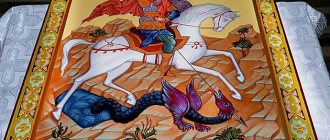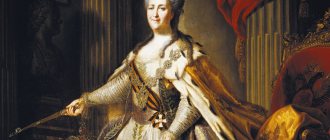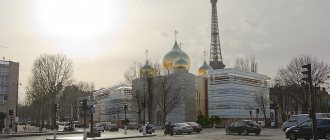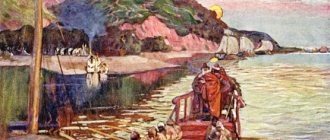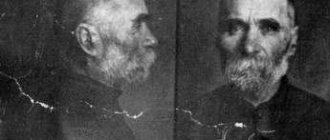Details
In the 1720s, a significant event occurred. At the invitation of Peter I, the Piedmontese nobleman Francis (Franz Matveevich) Santi began working on drawing up the coats of arms of kingdoms, provinces and cities. It was he who created the first color design of the Moscow coat of arms in history. “The field is red, on which Saint George is depicted with a golden crown, he is facing to the left, he is dressed, armed and sitting on a horse, which is decorated with his bridle with a saddle seasoning with a tire and pulled up with girths, and everything is silver or white in color; there Saint George holds his spear in the mouth, or mouth, of a black serpent”[4].
The clothing of the rider on the Moscow coat of arms changed constantly depending on who the artist intended him to be.
“He was either in a cone, if he was seen as a warrior who was stabbing a serpent with a spear, or in the Monomakh crown, as he is depicted on the seals of Tsar Mikhail Feodorovich, for he represented the Grand Duke himself, or in the princely crown on the seals of Tsar Alexei Mikhailovich... Sometimes , although less often, the horseman in the State Emblem was represented with his head naked”[5].
Liberties were also allowed in the degree of defeat of the snake: “Then the spear just pierced the animal, then it pierced it, then the snake seemed to sting the horse in the leg, then the horse crushes the dragon in the very chest”[6].
Search for something new
The socialist symbol approved in 1925 became obsolete after some ten years, even at the official level. “The coat of arms was used for some time “if necessary, to indicate the ownership of property by the Moscow Council, the Provincial Executive Committee, its departments and enterprises””[1].
An overabundance of production emblems and a complex composition played a cruel joke on the new coat of arms: there was a place in it for a five-pointed star, an obelisk, a hammer and sickle, a cogwheel and associated rye ears, an anvil with a shuttle, and even a dynamo. cars.
This coat of arms, by the way, was preserved in the pattern of the fence of the Stone Bridge across the Moscow River.
In the middle of the last century, attempts were made to come up with a new coat of arms, but nothing came of it. In 1964, the Main Architectural and Planning Department of the Moscow City Executive Committee announced an open competition for the creation of a coat of arms, proposing to combine the national traditions of the ancient capital and the achievements of the capital of a socialist state. We received 177 projects, but were unable to choose a winner. Many artists, by the way, in their works returned to the image of a horseman defeating a snake.
